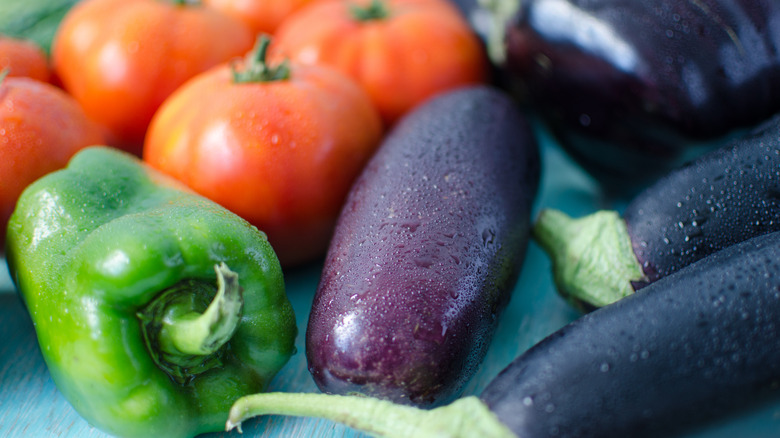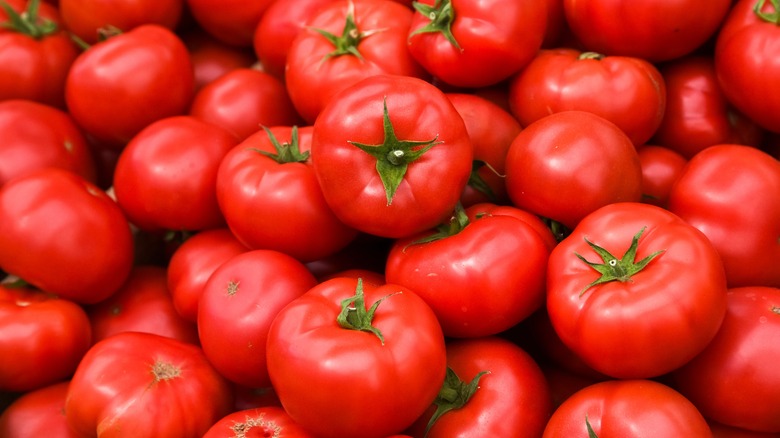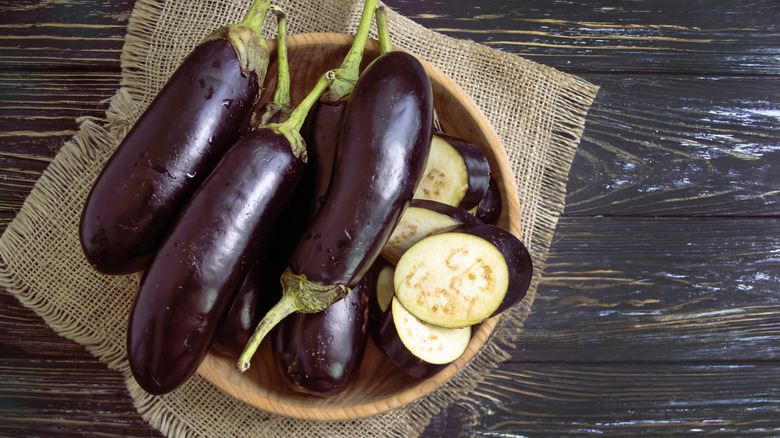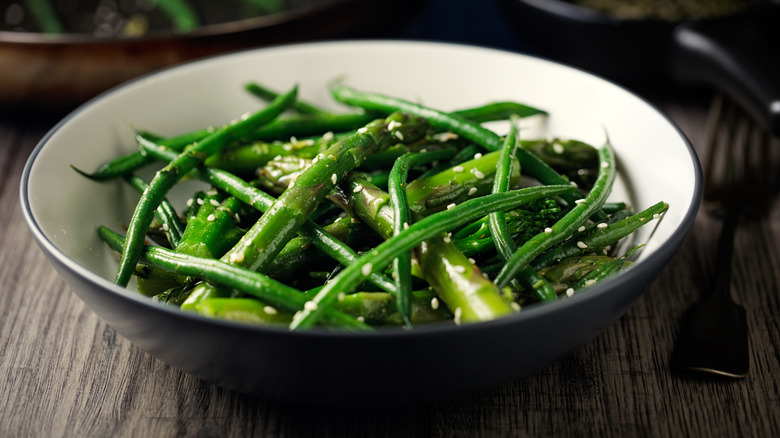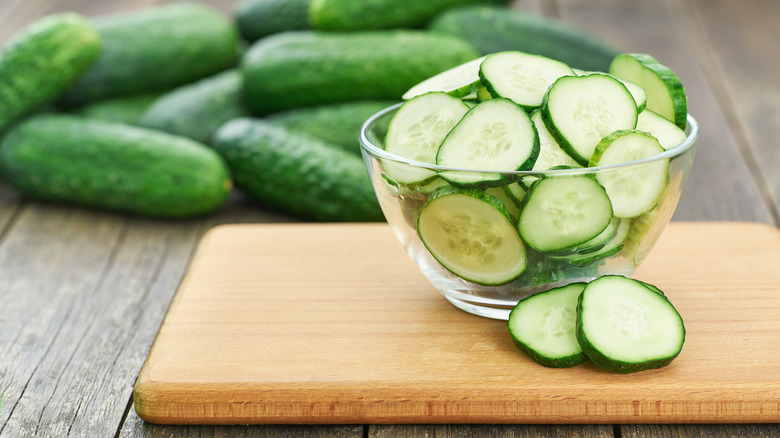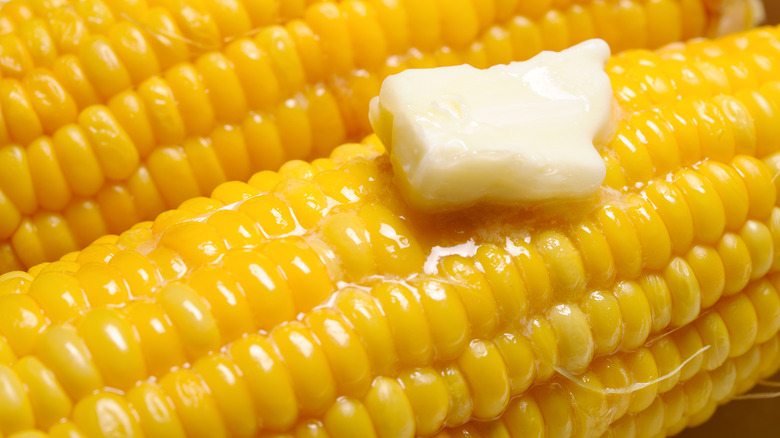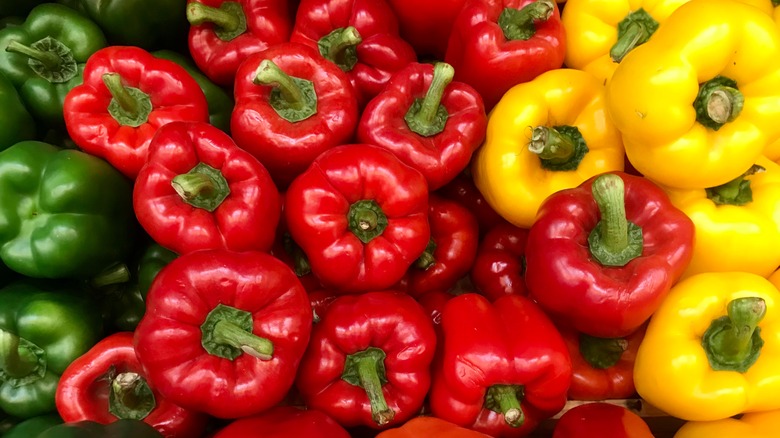6 Fruits That Are Always Mistaken For Vegetables
How many times have you been shocked to find that the produce you were sure was a vegetable is botanically classified as a fruit (aka hello tomato)? Now you're questioning all the produce that you know as a vegetable, tracing your memory back to the day that you learned to label it as such — has it been a fruit all this while?
What defines a piece of produce as a fruit or a vegetable is quite simple actually: Botanically speaking, it all depends on the part of the plant that it comes from. Only if the produce sprouts from the flower of a plant is it a fruit. If it grows anywhere else, then it is essentially a vegetable. Another distinguishing factor is seeds: While fruits have seeds, vegetables never do.
Some of the confusion may perhaps come from the culinary definitions of a fruit and a vegetable – where anything sweet and tart is considered a fruit and any savory produce that is low in sugar is treated as a vegetable. Regardless of where the misconception stems from, there are plenty of fruits that are wrongly mistaken for vegetables, but, hey, it's never too late to do some unlearning!
Tomatoes
The flag bearer of the fruit versus vegetable debate is none other than the glorious tomato, and the confusion around its classification is no new topic. If you were to go by the legal side of things, tomato is very much a vegetable. In the infamous 1893 Nix vs. Hedden case, a Manhattan-based wholesaler John Nix filed a complaint against the New York port collector when his tomatoes were charged with a 10% duty as all imported vegetables were at the time. While Nix argued that tomatoes were botanically defined as fruits and should not have been charged with import duties meant for vegetables, the United States Supreme Court ruled otherwise. Tomatoes were eaten with dinner rather than served as a dessert, and so "in the common language of the people," the judgment stated that tomato was a vegetable (via FindLaw).
Even some nutritionists may agree, for tomatoes do not have the sugar levels that are expected of most fruits. But if you go by the botanical nature of a tomato, it is, without any doubt, a fruit. Tomatoes grow from the ovaries of a flower and are flecked with dozens of tiny seeds — both things that distinguish a fruit from a vegetable. So if you take the botanical definitions of a vegetable and a fruit, tomatoes fall securely in the latter category.
Eggplants
Looking at an eggplant, you'd never imagine that it has more in common with fruits like sweet apples, pears, and bananas than vegetables. After all, eggplants are grilled in spicy preparations, layered into saucy moussakas, or simmered in hot curries rather than chopped into fruit platters or served on top of pancakes and waffles doused in syrup. But, lo and behold, they happen to be fruits!
Eggplants grow from the flowers of the plant and contain plenty of seeds, and so are defined as fruits. More specifically, an eggplant grows from the ovary of one single flower and as such, it is a berry! Who would've thought that eggplants, grapes, and gooseberries all fall in the same category? The same goes for aubergine, brinjal, or whatever it is that you call the shiny, oval-shaped eggplant — they all happen to be fruits.
The fact that an eggplant is a fruit shouldn't come as much of a surprise, especially considering the fact that it has always been a very misunderstood produce. For example, eggplants belong to the Solanaceae or nightshade family of plants (which also houses tomatoes), which were once considered to be poisonous enough to cause insanity. Though eggplants do contain certain toxins such as alkaloids that some people may be sensitive to, it's not exactly going to cause bouts of hysteria.
Green beans
Most green things are associated with vegetables unless they are unripe fruits of course (or maybe grapes), but green beans prove just why such things are often misconceptions. Even though the USDA categorizes green beans as vegetables, if you've ever sliced one open down the middle, you will have noticed that there are small seeds encased within. And anything that has seeds and grows from a flower is, by botanical definition, a fruit.
To be specific, the beans with soft seeds inside that we cook and eat as vegetables are still immature. As these green beans dry and the seeds inside mature, they harden into legumes — which are known to be products of fruits. That said, green beans are treated as vegetables for all intents and purposes in the culinary world, so there is no need to start chopping them into fruit salads just yet. But it is fascinating to think that all those spicy, buttery, garlicky green beans that you've been eating as crunchy stir-fries could very well be called fruit stir-fries if you wanted to!
Cucumbers
What do you see inside the aqueous flesh of a sliced cucumber? Why, seeds of course! Plus, cucumbers come from the flowers that grow on the vines of the cucurbitaceae family of plants, so for all matters of botany, they are fruits — even those varieties that don't have any seeds in them. Much like eggplants, cucumbers also come from one flower alone so technically, they are more than fruits: cucumbers are berries. All those viral TikTok videos claiming that cucumber sprinkled with sugar mimics the taste of watermelon are starting to make more sense now, aren't they? Cucumbers and watermelons both belong to the same gourd family of plants, they both have a high content of water (upwards of 90%), and more importantly, they are both fruits.
Although cucumbers are treated as vegetables culinary-wise, they are one of the few fruits parading as vegetables that can actually dabble in both worlds. Sure, they are used in savory preparations such as pickles and sandwiches, but you'd be amazed to find just how much a cucumber will taste like a fruit when it is paired with other sweet fruits such as its fellow berries, in say smoothies or fruit-infused waters.
Corn
If you looked at the husk outside an ear of corn, you'd think that it was a vegetable. If you observed unpopped kernels of dry popcorn, you'd conclude that it was a grain. But if you ask botanists, they'd tell you that corn is a fruit. So which one is it? As it turns out, corn is all three: it is a grain and a vegetable, but it is also a fruit by its nature.
A corn cob grows from the flowers of a corn plant which means that corn is a fruit, and the yellow kernels are the part that is classified as a grain. Now you may be wondering where a corn's seeds are — they are the same yellow kernels that also happen to be whole grains. And because the culinary world defines produce that is low in sugar and more savory than sweet as a vegetable, corn is also labeled as such — though it is, of course, slightly sweet. Now you can still go ahead and eat corn cobs with lashings of salty butter or turn its kernels into a spicy salsa along with other vegetables, but don't forget that it's a fruit in disguise, at least as far as its botanical classification is concerned.
Peppers
When you think of a fruit, you likely picture something that tastes sweet, bright, and sugary, or perhaps something that has a hint of tart sharpness or notes of a sour and citrusy flavor. What you almost never imagine a fruit to be is spicy. But that is exactly what most peppers are: spicy fruits! Granted, those red, yellow, green, and orange bell peppers have no capsaicin and are not spicy at all, but they aren't the only peppers that are wrongly mistaken as vegetables.
Filled with seeds and plucked from flowers, bell peppers have all the makings of a fruit. But so do hot red chili peppers — they are berries to be precise! In fact, all peppers are fruits whether it's the not-so-spicy bell pepper, mildly spicy jalapeño, or the mouth-numbingly hot ghost pepper. So, even though in culinary terms peppers are treated as vegetables, they botanically happen to be fruits. To make things even more interesting, the same peppers when dried into flakes and powders can turn into a spice! Fascinating, isn't it?

